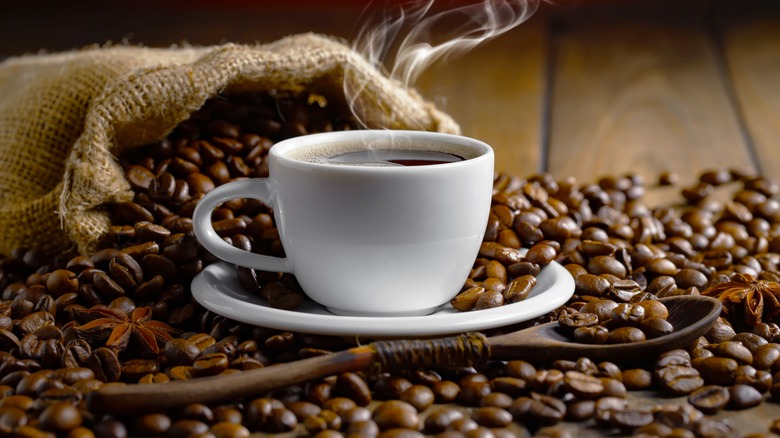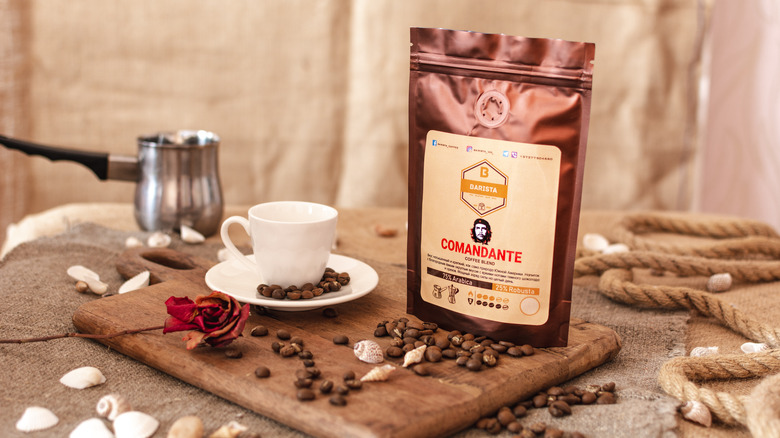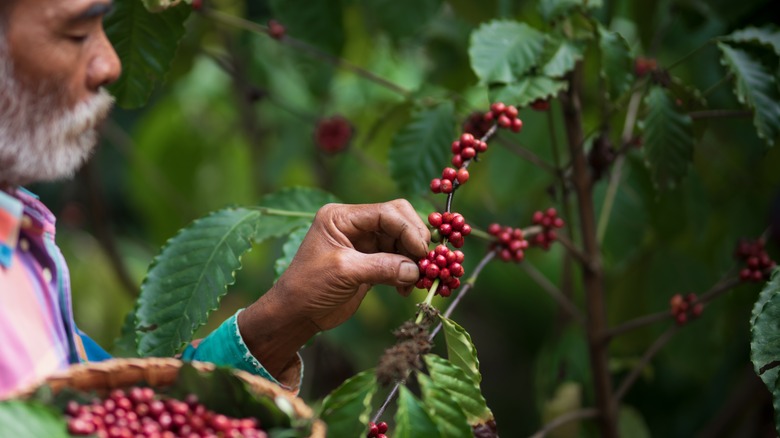Harvest Date Vs Roast Date: Which Matters Most For Buying Coffee?
Once a raw coffee bean goes into the roasting bin, the race against time begins. Roasting coffee increases the likelihood that your favorite java beans will succumb to the effects of oxygen, thus eventually rendering your coffee stale. That's why in the great debate regarding harvest date and roast date, the roast date wins, hands down. Coffee lovers like to debate this point for practical reasons, of course. They want some insurance that every sip of coffee will taste supreme. In this case, it's a question of how much oxygen your favorite roast gets exposed to, which mostly happens once it's roasted and after you open the bag.
After your java's grand opening, it's best to finish the bag of coffee rather quickly — within 10 days or less is often the number that gets bandied about. It's for this reason you'll also come across advice that recommends buying small bags of coffee. The rationale goes that if roasted coffee goes bad quickly after its open-date, then it's better to buy small bags that you can brew and drink quickly. Basically, the faster you drink your coffee, the more likely you'll finish a bag before it gets stale. However, truth be told, most opened bags of coffee maintain their flavor for up to 30 days after opening.
The role of CO2 and the coffee valve
When manufacturers package coffee, they often put fresh roasted coffee in bags with a little belly button-looking contraption in the front. This is a one-way valve that allows the CO2 to escape the bag while preventing oxygen from seeping in. The piece might look a bit funny, but bad things can happen without it. In some instances, coffee that's packaged without a valve can burst open because there's no place for the extra CO2 to go. Roasting coffee creates CO2, hence the need for the valve.
In any event, coffee that's packaged correctly — valve included — should remain viable in the bag for several months. It's difficult to overstate the role that packaging plays in this process. Many coffees today get packaged in paper bags. However lovely this may look from a design perspective, it actually hurts the long-term freshness of the coffee. The paper package doesn't stop oxygen from getting to the coffee in the same way a foil bag with a navel would.
Additionally, if you buy whole bean coffee, it'll likely taste better if you let it sit for up to 10 days before grinding it. This is because after the coffee is first roasted, the CO2 in it flees like a pup that escaped the confines of a locked fence. This process slows down the longer the coffee beans sit in the bag, making it more ideal to wait for a bit before grinding it up and drinking it.
What about the harvest date?
It can take months from the time the raw coffee beans go from being plucked from the vine to the roaster's bin. Checking the harvest date does tell you when your coffee of choice came into season. However, it is important to know that a great deal of time can pass from the time your coffee got picked and the time it was roasted. Because of this, the harvest date won't necessarily speak about the freshness of the coffee. In the end, it's usually the roasting and packaging dates that determine how good your coffee tastes at first sip.
In light of this, it's sometimes, better to look at the "best by" date. Roasters will sometimes conduct experiments on batches of coffee, testing them to see how long roasted coffee can sit in its containers without the quality of the java being affected. The roaster comes upon the "best by" dates after testing myriad coffee batches. From these experiments, the manufacturer or roaster extracts enough information to allow them to conclude that their coffees remain fresh-tasting within a specific time window, the "best by" date. If you drink it by then, your bag of coffee should still taste pretty fresh and delish, regardless of what the harvest or roast dates are.


